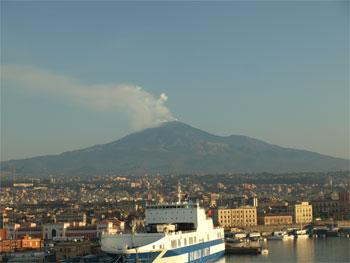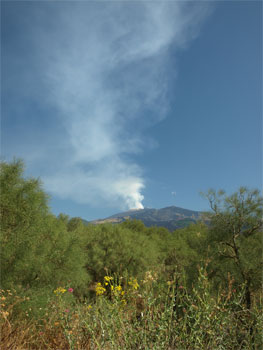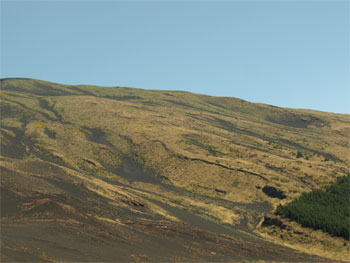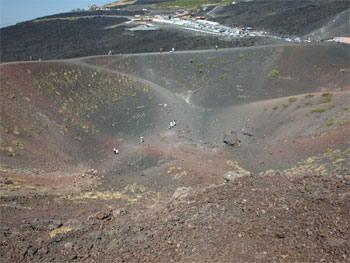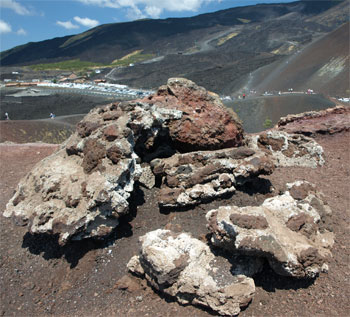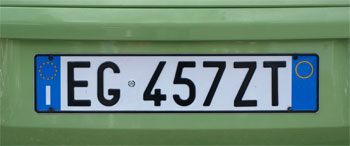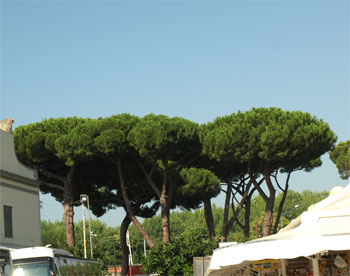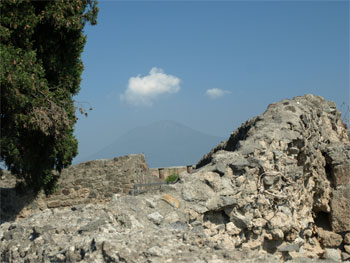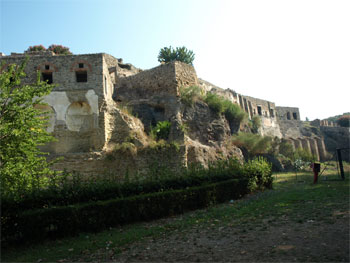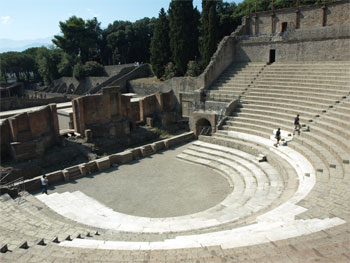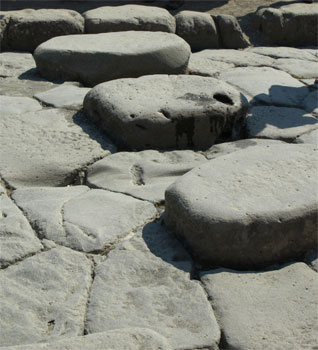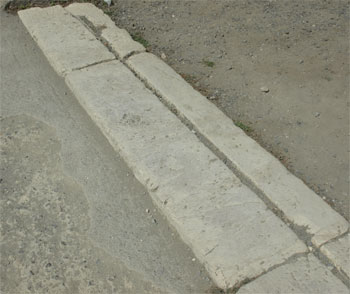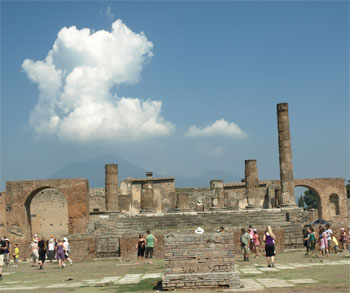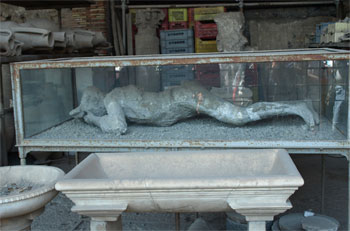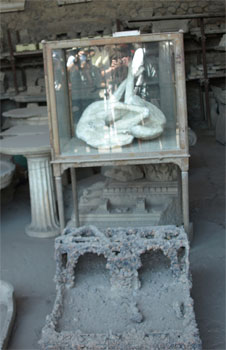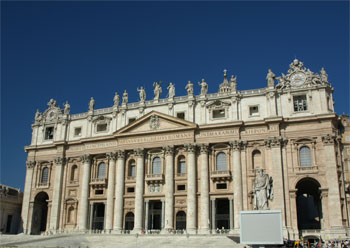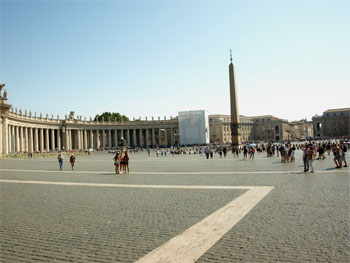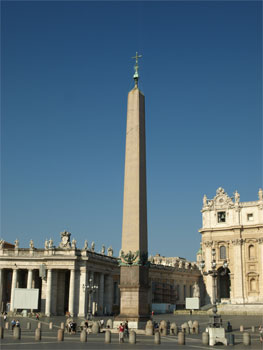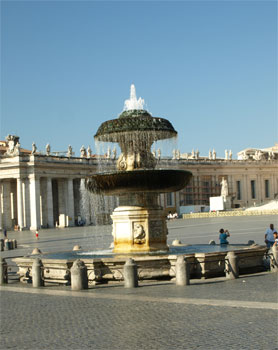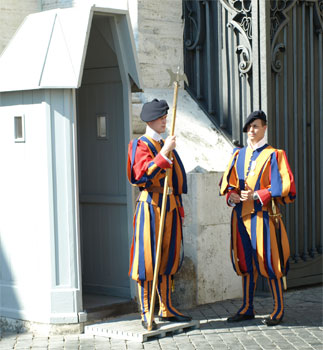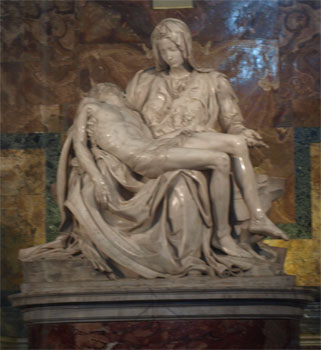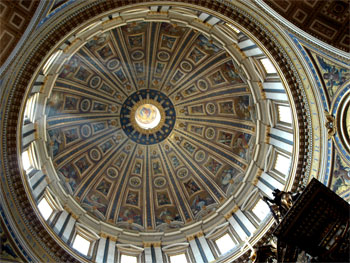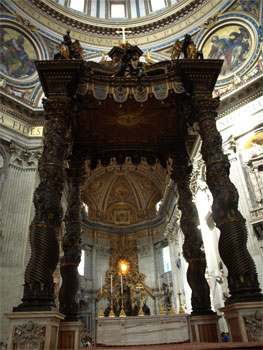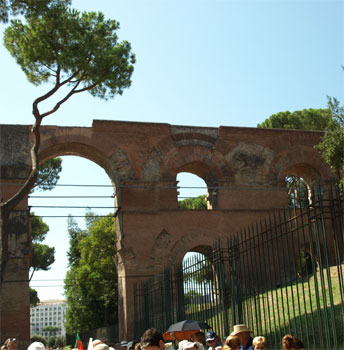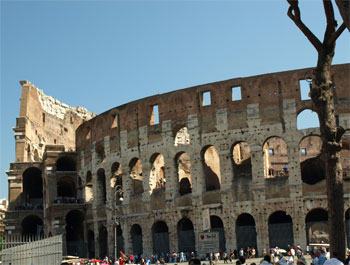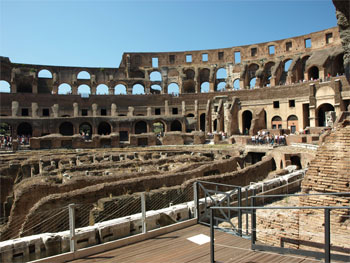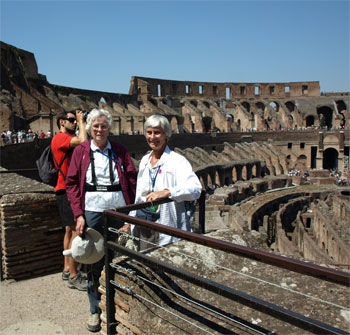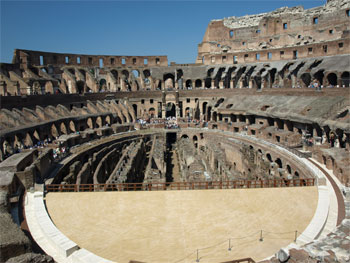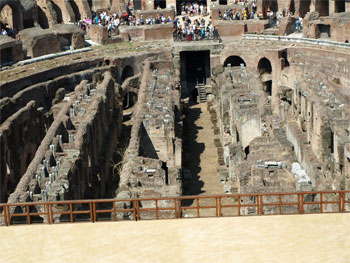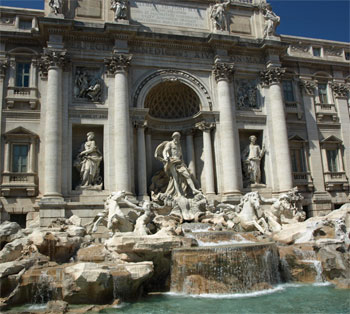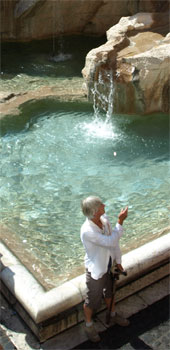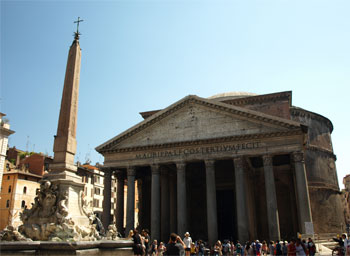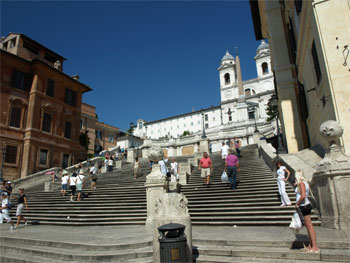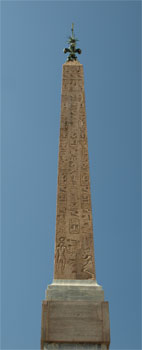Tues., 8/16/11 - Catania, Sicily and Mt. Etna
This morning we docked in the port of Catania in Sicily and took an excursion up to Mt. Etna. This is a very active volcano - it has erupted eight times in the past 30 years and belches steam and ash now. Rivers of molten rock flowed down toward Catania in 1971 and 1983. A smaller eruption occurred in 2003.
Mt. Etna from the harbor |
Mt. Etna
|
Today we just saw steam and ash from several crater vents at the top - about 10,900 feet above sea level. The bus ride up to the viewing areas and the ski slope resort/shop areas gave impressive views of the city, the Mediterranean Sea, and the fertile wheat and grape fields. You could see where the lava flows have created rough porous rocky troughs and paths down the mountainside. |
|
Crater and lava flows
|
Lava flows |
Older lava flows now partially covered with vegetation |
Silvestri Crater
|
Aa lava
|
We were very impressed with the size and destructive force of Mt. Etna. We were told that the road and a few houses were most recently buried in six meters of lava and ash but no one has ever died in one of these eruptions. This was also the coolest day of the entire trip - because of the altitude. |
We returned to the ship for lunch and the rest of a typical day on board.
Tonight before dinner we sailed through the Strait of Messina that separates Sicily from the toe of the boot of Italy. At its narrowest, it is only 1 1/2 miles across.
Wed., 8/17/11 - Naples, Italy and Pompeii
This morning we joined a tour to see the ruins of Pompeii. In 79 AD Mt. Vesuvius erupted violently and without warning and covered the Roman city of Pompeii and several other towns with poisonous gas (sulfur), ash, fire, and molten lava 20 to 30 meters deep. About 300 years ago a new irrigation project and aqueduct was being built and the city below the surface was discovered. Since it takes about 80 to 100 years for vegetation to cover volcanic flow, there was no indication of what was underneath.
Italian EU license plate - we didn't see any in Venice, only boats |
Mt Vesuvius topped by clouds, not steam - Naples is in the foreground
|
Evidently a Greek sailor 40 miles out to sea witnessed the eruption and wrote about what he saw. He described the eruption as the shape of a huge "umbrella" pine tree.
|
Umbrella pine trees
|
We entered the ruins with our local guide and walked - in 90°+ heat and sun - to the marketplace that was originally next to the harbor and the odeon or small roofed theater. There were eight gates into Pompeii and in the first century of Roman rule it was a peaceful, active, trading, commercial, and residential city.
|
|
Mt Vesuvius beyond the walls of Pompeii |
Walls of Pompeii
|
Marketplace or agora
|
Roman theater still used occasionally for performances |
We walked through streets wide enough for a chariot and the larger boulevards running north to south. Many of the streets contained large "speed bumps" - large, rounded rock structures designed to slow the chariots or to entirely prevent them from using the street.
|
|
Street with chariot "speed bumps"
|
Chariot "speed bumps" |
Mural on the wall of a house of prostitution |
Groove for a sliding door in the threshold of a shop
|
Market square with temples of Apollo and Diana
|
Most of the statues, mosaics, fountains, etc. are displayed in the Archaeologic Museum in Naples (which we did not visit). Also, most of the original buried remains of people, animals, etc. are in the Museum. On display at the site, are casts of the people and animals as well as many other artifacts.
|
Pregnant woman |
Dog caught by the lava
|
Thurs., 8/18/11 - Rome, Italy
This morning we docked in the port of Civitavecchia, which serves Rome. We took a HAL excursion into Rome to get a sampling of this wonderful ancient city. We visited the Vatican briefly, the coliseum, Trevi Fountain, the Pantheon, and the Spanish Steps.
Our first stop, after a 90-minute bus ride, was the Vatican City. We stood in St. Peter's square to admire the outside of St. Peter's Basilica and the Egyptian obelisk marking the spot were St. Peter was crucified.
St. Peter's Basilica is supposedly the largest in the Christian world. (There are marks on the main floor to indicate the length of Notre Dame, St. Paul's, etc.) |
St. Peter's Square The colonnade that encompasses the square was designed by Bernini to signify the arms of a mother caressing her children. There are statues of 140 saints at the top of the columns.
|
Egyptian obelisk marking to site of St. Peter's crucifixion
|
Bernini's fountain |
Swiss Guards |
Center bronze door with a relief of Nero watching St. Peter die on the cross (lower right panel)
|
Inside, the basilica is stunning. All of the paintings on the ceiling and huge walls were changed to mosaics by Pope Gregory II. The highlight of St. Peter's is without a doubt the Pieta. It is now behind glass because a disturbed geologist attacked the sculpture with a geologist’s hammer in 1972. The marble is a translucent white, the emotion in Mary's posture and the precision of the anatomies are incredible. It really gives chills up the spine it is so beautiful.
|
|
Michelangelo's Pieta
|
Great dome of St. Peter's |
The baldachin or canopy over the high altar - the apse of the Cathedra is in the background
|
A smaller dome |
We rode in our motor coach (air conditioned!!!) to the Coliseum. It was built by the Romans in 0 - 80 BCE and is the largest amphitheater built by the Romans. It originally seated 70,000 spectators. We walked past the triumphal arch of Constantine outside the coliseum. The Roman soldiers marched under such arches upon a victorious return from battle.
Aqueduct down the street from the Coliseum
|
Arch of Constantine |
The coliseum is actually two "C" shaped amphitheaters put together. It had a double arch outer structure but several parts are in ruins because of "recycling" of the marble.
|
|
|
|
Our "we were there" photo
|
Below the slab are the cages for the animals and cells for the prisoners and gladiators. The Romans created the first elevators operated by pulleys and counterweights to bring the animals up to the arena. The arena stones were covered with sand so the blood was absorbed and not slippery. |
|
Some of the coliseum has been restored and some is in ruin but we are able to imagine how it was almost 2000 years ago.
|
Next we went to Trevi Fountain. Buses can't get near the old parts of town, so we walked in the heat to the mass of people around the famous fountain. It is a beautiful structure and the water looked so refreshing. I threw a coin in (right hand over left shoulder) and made a wish.
Trevi Fountain |
Trevi Fountain - you can even see the coin!
|
We had some free time so we walked the narrow alley-like streets to the Pantheon. The original Roman temple to the mythological gods has been restructured into the Basilica of Santa Maria and Martyrs. We stood inside and tried to envision it as the Roman temple that lay beneath the religious paintings.
|
The Pantheon
|
We still had time so we walked back and over to the Spanish Steps. We climbed all the way up and popped into the church at the top and then down and back to our tour group.
|
|
Spanish Steps |
Obelisk at the top of the steps
|
Sundial on the Trinita dei Monti church
|
Traditional clock and sundial - neither working |
| Return to Top | Return to Itinerary | Return to Dreamcatcher Home Page |
